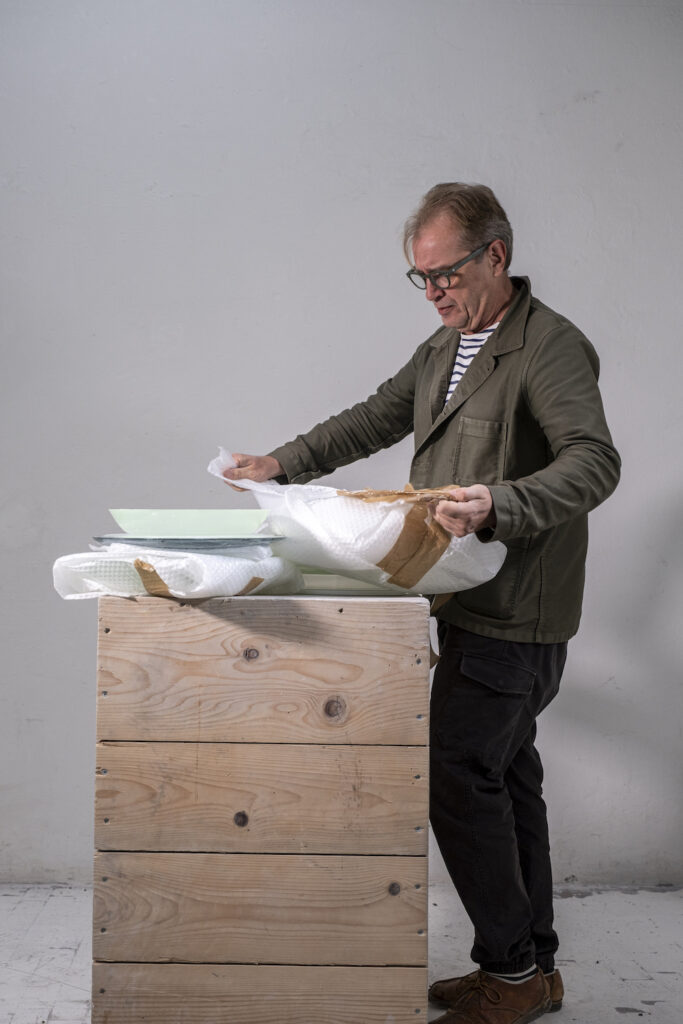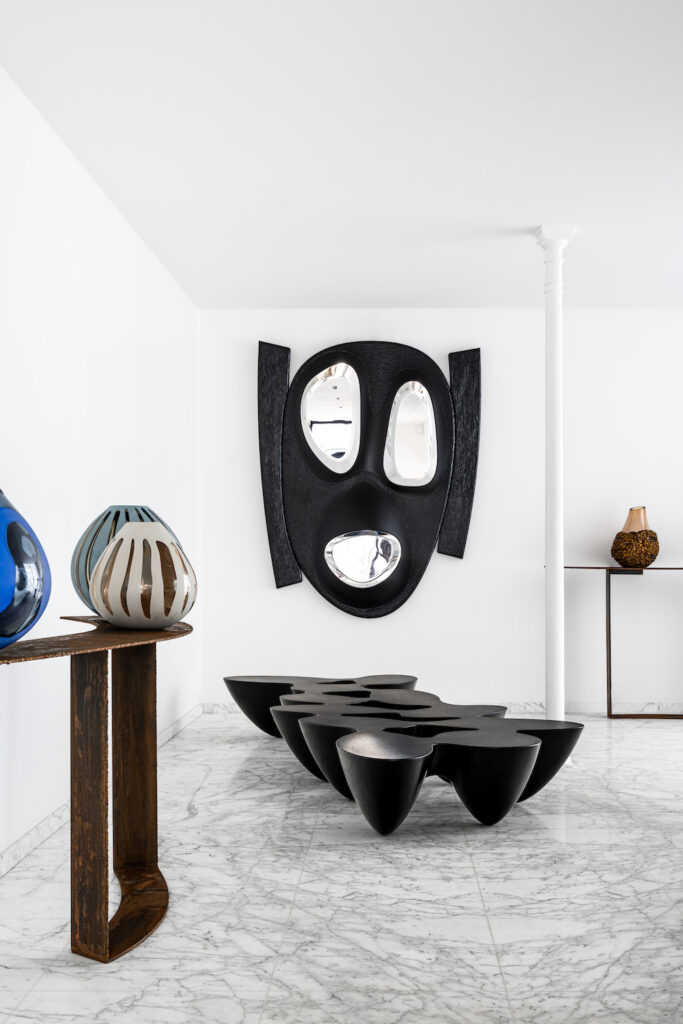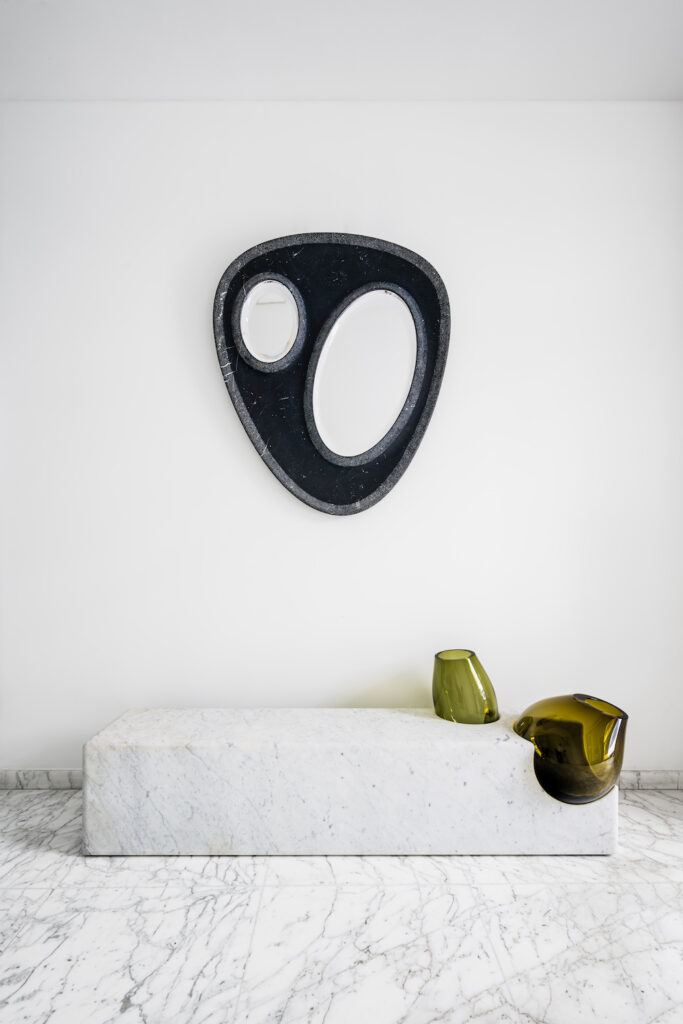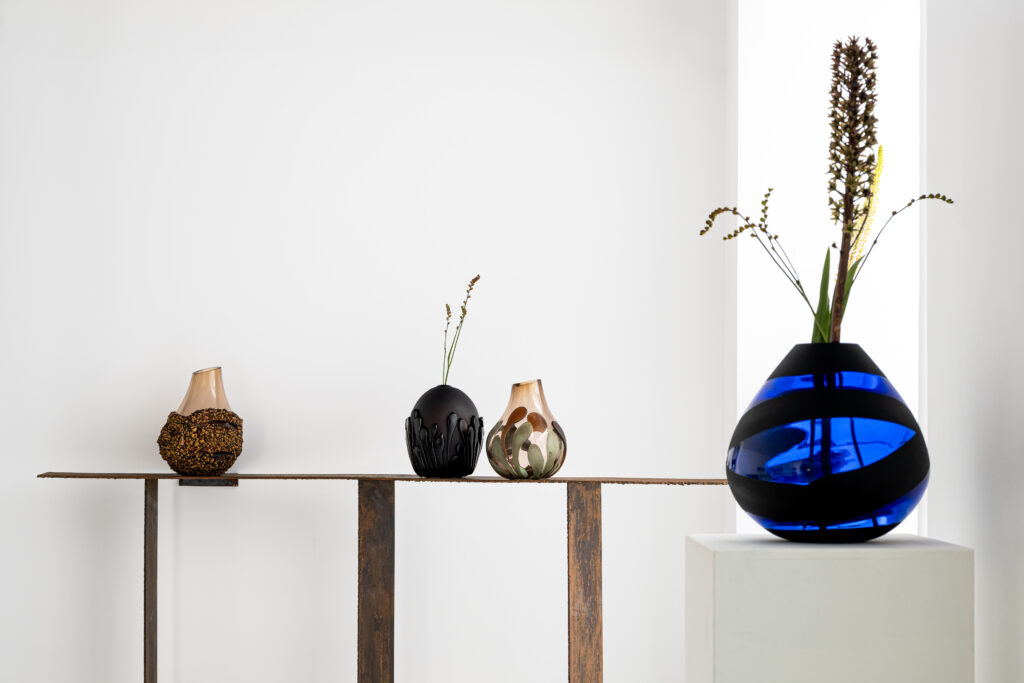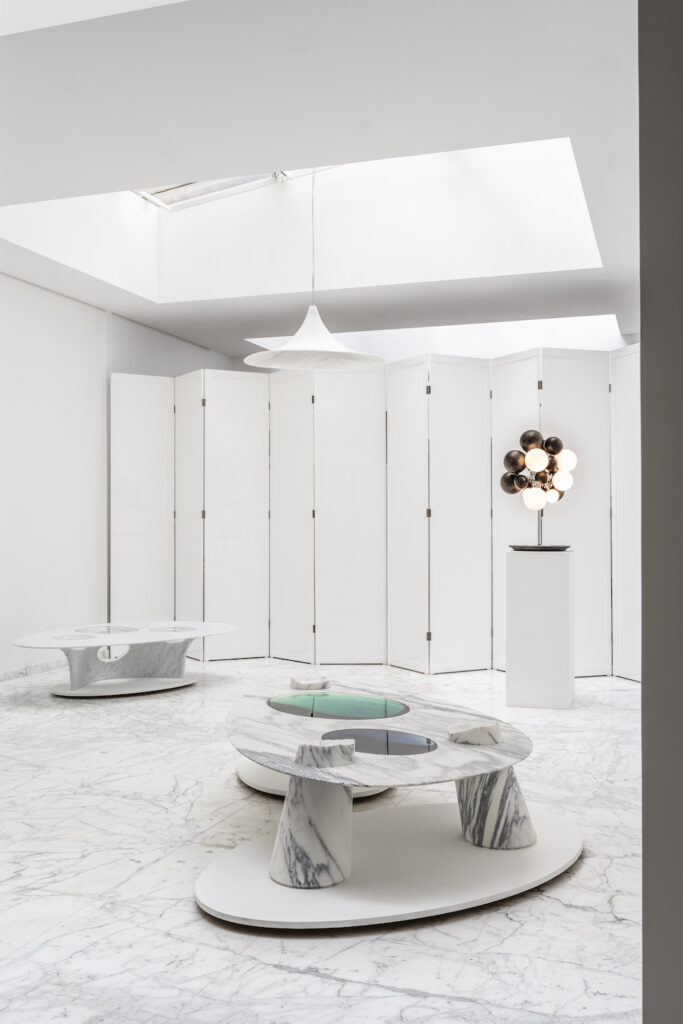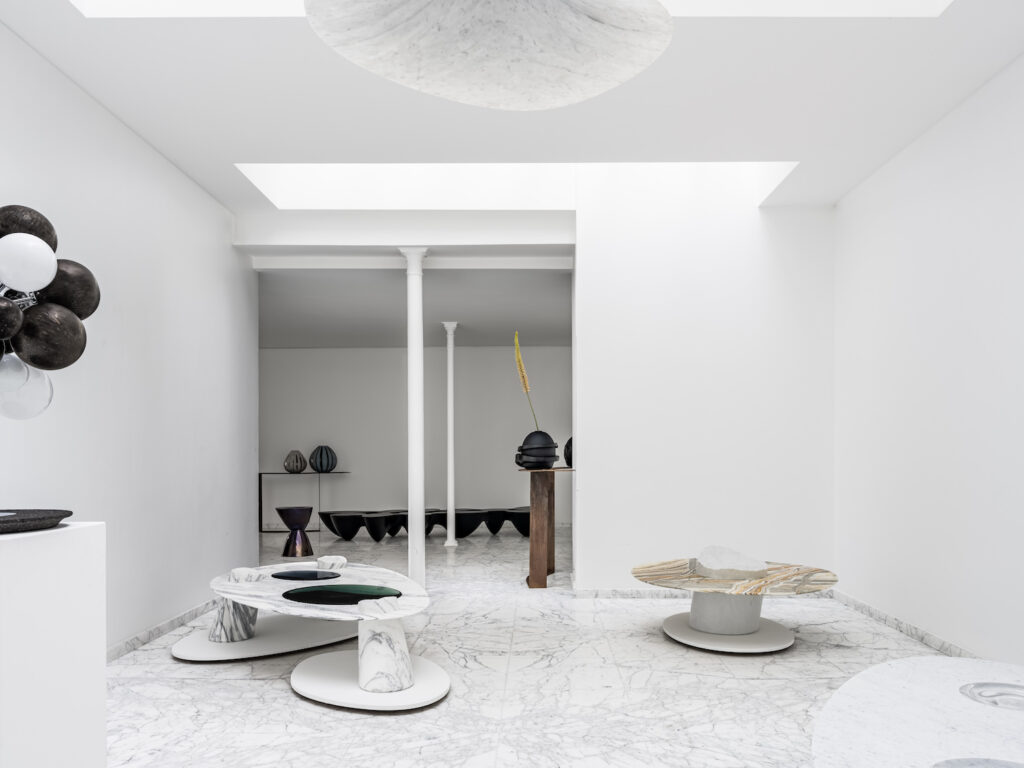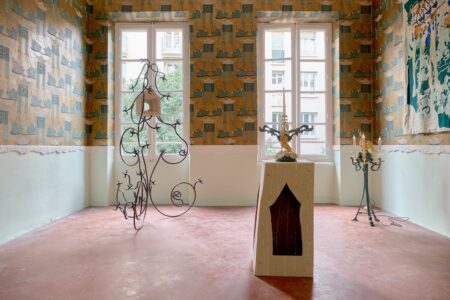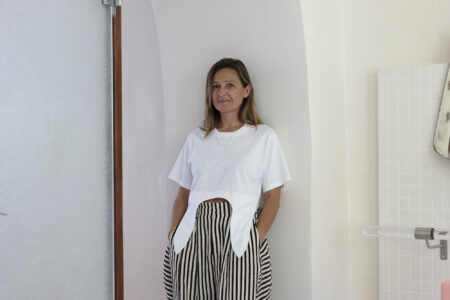Emmanuel Babled: Territorie
Galerie Gastou presents an engaging exhibition of furniture and sculptural objects by French multidisciplinary designer Emmanuel Babled. Titled Territoire, the exhibition is on view through October 26th.
An in-depth exhibition of furniture and sculptural objects by multidisciplinary designer Emmanuel Babled is currently on view at Galerie Gastou through October 26th. Titled Territoire, the exhibition explores Babled’s continued interest in merging artisanal knowledge with innovative technologies to push the boundaries of what an object can become. Babled’s work can seem at once futuristic and ancient depending on the context or environment in which it is placed. The work not only carries the heritage of the materials and traditional craftsmanship but assumes contemporary influences and reflections as well. TLmag spoke to Babled about his exhibition.
TLmag: Territoire, your current exhibition at Galerie Gastou, features work that reflects the importance of place and of heritage within different cultures and locations, such as Murano and glass and Sicily and marble. Would you talk about a couple of pieces in the exhibition and how they embody this idea of territory?
Emmanuel Babled: Unlike industrial design, which often starts with the consumer, the starting point of my projects lies with the artisans and their skills, as well as the materials and their inherent characteristics. These elements—the medium—combined with the final vision I aim to achieve as a designer, shape the uniqueness and rarity of the project. In the exhibition Territoire, we have, for example, two series of glassworks created by the same hands, those of Master Andrea Zilio, and myself. The Murano origins of these works are obvious for the type of glass, the flexibility of the techniques used, and the vibrant colours. These pieces could not be created anywhere else in the world. However, in the Azoic series, the expression is that of inert objects, reminiscent of the geological era called the Azoic, when Earth was only water and rock, and life had not yet emerged. These objects embody both the tactile and symbolic contrast between opaque, rough stone and transparent, radiant water. On the other hand, the Ubuntu series was born after my travels to Tanzania with the artist Lara Morrell and our desire to draw inspiration from the abundant, warm nature of the tropics and the holistic culture of its people. The resulting pieces appear as if they are being overwhelmed by powerful leaves or rich red earth, while others take on a mystical or symbolic quality, monochromatic and almost resembling sacred urns. This combination of influences reflects the essence of the Territoire exhibition. The projects originate from the hands, artisans, and techniques tied to a specific place, whose characteristics become the medium of the project. Yet, the imagination can infuse them with other territories—mental and conceptual realms. Another example is the Osmosis series, where two materials—marble, an inert stone to be carved, and glass, a fluid material to be blown—are blended. These also represent two ancient places: Carrara and Murano. In the Osmosis pieces, they are perfectly combined through digital technology, which allows for their seamless, intriguing union.
TLmag: Is the work on view at Galerie Gastou mostly new and made for the show?
E.B.: This exhibition tells the story of various experiences, reflecting different places, knowledge, and people. In my work, the function of objects like tables or lamps often serves as a pretext; the real intent lies in the message they carry. This message is expressed through the character made possible by the chosen material, the craftsmanship of those who work with it in a particular way, and my personal interpretation. Often, the pieces on display may seem to come from different authors, but in fact, they speak of different experiences where the place, the hands, and the materials have played a decisive role. As I’ve learned from blown glass, we often discover works while on the journey, capturing that magical moment when material, people, and formal emotion come together in a unique, unrepeatable object—yet one that always remains true to itself. This exhibition brings together many of these moments and orchestrates them in one single space.
TLmag: Some of your work is very much about curves and rounded forms—wave like or nature-inspired patterns. What attracts you about this form? Is it led by the material or it’s more design-driven?
E.B.: I am a child of the 1970s, a time when protest, colour, and a return to nature were seen as a new form of trust, standing in opposition to the conservative mindset. In a similar way, I react against the status quo of engineering and the industrial revolution—the mathematics and logic of construction. I have always sought to reclaim the freedom of form, much like nature, which achieves this so gracefully.
TLmag: You are currently based in Lisbon. How has this city and the craft heritage of Portugal begun to inspire your work? Are there pieces in this show that were made there?
E.B.: There are no pieces produced in Portugal in this exhibition, although I have created a few works in there. Portugal is an inspirational place for me for many reasons. Despite being a relatively small country, with around 10 million inhabitants, it is remarkably multicultural and tolerant. Economically, it may be a ‘marginal’ European nation, but it is rich in lessons about openness to the world, from Brazil to Africa, from Goa in India to Macau in Asia. I believe these influences make Portugal a unique and inspiring place for the world. It is no coincidence that my new project KUKUA began here.
TLmag: Much of your work uses advanced technology to create beautifully crafted objects, a mix of machine and the hand. It’s a reminder that technology can be a useful tool and not something that takes away from originality and craft. Do you use AI in your practice at all? What are your thoughts on that?
E.B.: Technology is nothing more than a crafted tool designed for a specific task—it’s a super tool in the artisan’s toolbox, not a replacement, but an aid. A machine can never truly understand materials the way a craftsman does; it’s a matter of feeling, of touch, something we gain through our physicality. Even the most sophisticated machine lacks the capacity to experience our five senses. Of course, it can be programmed with probability models, but the combination of sensations in humans leads to emotions and the power of deliberate decision-making, something even the most advanced machine cannot justify. AI could be the next step in using this technology. I haven’t explored it deeply enough to apply it yet, but I can imagine its potential could lead to unexpected results—if we are able to guide it in a unique, humanistic direction rather than toward a commercial average.
TLmag: Would you tell us about the monograph, which has also been released this month? Is this your first monograph?
E.B.: Yes, it is my first monograph, and I was able to create this book thanks to the enthusiasm of the publisher, Eric Ghysel. It took three years to really get it started. The book is called La Main des Autres because if I were to make a monograph, it had to also pay tribute to the incredible artisans—my friends—and the centuries-old, tacit knowledge I’ve had the privilege to access through their generosity. I hope this book can inspire other designers and artists to be inclusive and to recognize that our strength grows when we share. A good life is not about owning, but about sharing.
Territories is on view at Galerie Gastou through October 26th, 2024.
